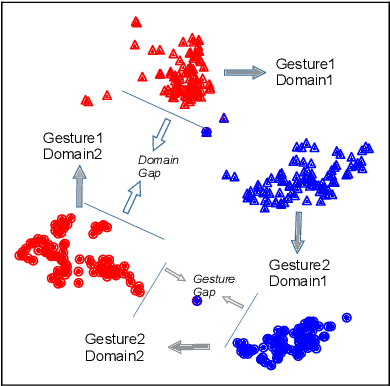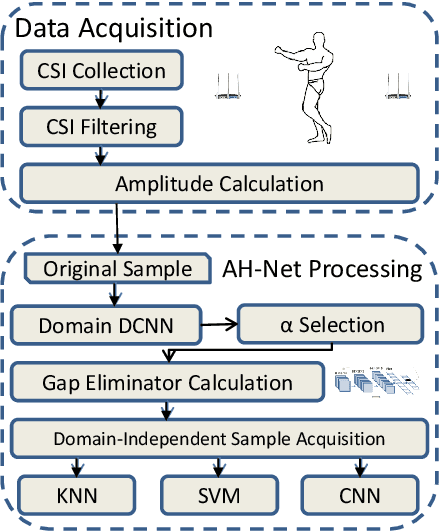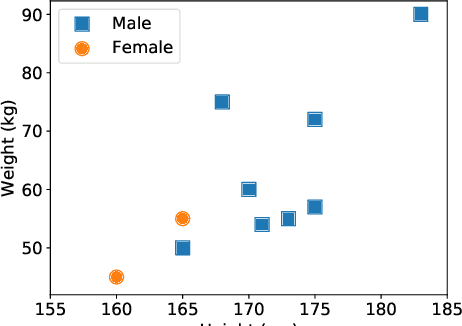Adversary Helps: Gradient-based Device-Free Domain-Independent Gesture Recognition
Paper and Code
Apr 08, 2020



Wireless signal-based gesture recognition has promoted the developments of VR game, smart home, etc. However, traditional approaches suffer from the influence of the domain gap. Low recognition accuracy occurs when the recognition model is trained in one domain but is used in another domain. Though some solutions, such as adversarial learning, transfer learning and body-coordinate velocity profile, have been proposed to achieve cross-domain recognition, these solutions more or less have flaws. In this paper, we define the concept of domain gap and then propose a more promising solution, namely DI, to eliminate domain gap and further achieve domain-independent gesture recognition. DI leverages the sign map of the gradient map as the domain gap eliminator to improve the recognition accuracy. We conduct experiments with ten domains and ten gestures. The experiment results show that DI can achieve the recognition accuracies of 87.13%, 90.12% and 94.45% on KNN, SVM and CNN, which outperforms existing solutions.
 Add to Chrome
Add to Chrome Add to Firefox
Add to Firefox Add to Edge
Add to Edge